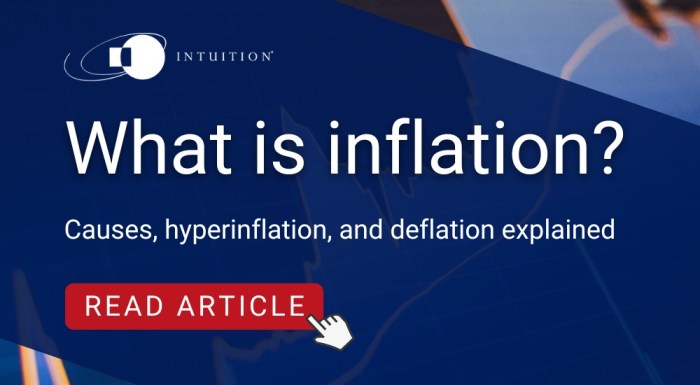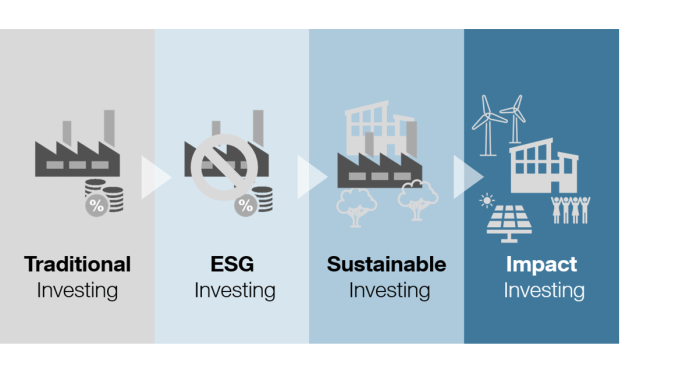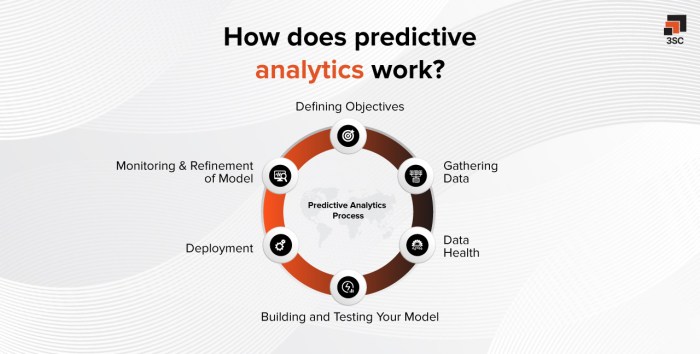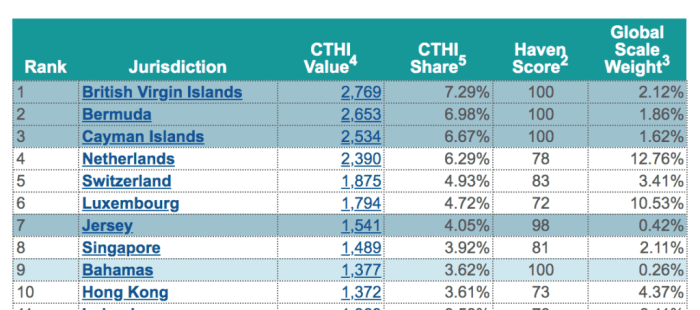The Effects of Hyperinflation on Corporate Financial Statements explores the significant challenges hyperinflation presents to accurate financial reporting. Rapidly escalating prices distort the traditional measures of revenue, assets, and liabilities, forcing companies to adopt specialized accounting treatments to maintain a semblance of financial clarity. This analysis delves into the complexities of adjusting financial statements for hyperinflation, examining its impact on various aspects of corporate accounting, from revenue recognition to foreign currency translation.
Understanding these effects is crucial for investors, creditors, and management alike. The ability to accurately assess a company’s financial health during hyperinflation requires a nuanced understanding of the accounting standards and adjustments necessary to present a fair and reliable picture. This exploration will provide insights into the practical challenges and potential solutions for navigating this turbulent economic environment.
Impact on Revenue Recognition: The Effects Of Hyperinflation On Corporate Financial Statements

Hyperinflation significantly distorts the measurement and timing of revenue recognition, posing considerable challenges for companies preparing financial statements. The erosion of purchasing power renders historical cost accounting unreliable, necessitating adjustments to accurately reflect the economic reality of transactions. This necessitates a deep understanding of how various accounting standards and methods handle revenue recognition under hyperinflationary conditions.
The fair value of goods and services sold becomes extremely difficult to determine during hyperinflation. Traditional methods, which rely on historical costs, are rendered practically useless as the value of the currency fluctuates wildly. This necessitates the use of alternative valuation methods, often involving adjustments for changes in the general price level. The choice of valuation method directly impacts the reported revenue and the company’s overall financial position.
Challenges in Determining Fair Value
Determining the fair value of goods and services sold during hyperinflation presents significant challenges. The rapid and unpredictable changes in currency value make it difficult to establish a reliable baseline for pricing. For instance, a company selling a product for 100 units of currency today might find that the same product is worth 200 units tomorrow due to hyperinflation. This necessitates the use of current cost accounting or other methods that adjust for the changes in the general price level. Companies might use indexation methods, adjusting prices based on a relevant price index to arrive at a more realistic representation of fair value. The complexity arises in selecting an appropriate price index that accurately reflects the specific goods and services sold. Another challenge lies in the potential for inconsistencies in pricing, especially in situations where goods are purchased at different times and at different prices. This can lead to discrepancies in reported revenue and profit margins.
Revenue Recognition under Different Accounting Standards
International Financial Reporting Standards (IFRS) and Generally Accepted Accounting Principles (GAAP) offer different approaches to revenue recognition during hyperinflation. IFRS, particularly IFRS 29, provides specific guidance for hyperinflationary economies, requiring the restatement of financial statements in a more stable currency. This restatement process significantly impacts revenue recognition, as transactions are valued at current prices rather than historical costs. GAAP, on the other hand, lacks specific guidance for hyperinflation, leaving companies to rely on more general principles. This often results in inconsistencies in how companies report revenue under hyperinflationary conditions. The choice between using a stable currency or the local currency for reporting also creates a significant impact on reported revenue figures.
Impact of Hyperinflation on Accrual vs. Cash Accounting
Hyperinflation drastically alters the implications of using accrual versus cash accounting methods. Under accrual accounting, revenue is recognized when earned, regardless of when cash is received. During hyperinflation, this can lead to significant discrepancies between the reported revenue and the actual cash inflows. For example, a company might report high revenue based on sales made, but the actual cash received may be significantly less due to the rapid devaluation of the currency. Cash accounting, on the other hand, recognizes revenue only when cash is received. While this method provides a more accurate picture of actual cash flows, it might not reflect the true economic value of the sales made during a period of hyperinflation. The choice between these methods significantly impacts the financial statements’ representation of a company’s performance and financial health.
Adjustments to Financial Statements
Adjustments to financial statements are crucial to accurately reflect the effects of hyperinflation on revenue. These adjustments often involve restating the financial statements using a more stable currency, adjusting for changes in the general price level, and using current cost accounting methods. The process involves identifying the impact of inflation on individual items within the revenue account, and then making the necessary adjustments to bring them to current values. The magnitude of these adjustments can be substantial, potentially altering the company’s reported profitability and financial position significantly. Failure to make these adjustments can lead to misleading financial statements and an inaccurate portrayal of the company’s performance.
Effects on Inventory Valuation

Hyperinflation significantly distorts the value of inventory reported on corporate financial statements. The rapid and continuous increase in prices renders traditional inventory costing methods less reliable, potentially leading to misstatements of both the cost of goods sold and the value of ending inventory. This section explores the impact of hyperinflation on inventory valuation using different costing methods and discusses the challenges companies face in maintaining accurate inventory records during such periods.
Inventory Valuation Under Different Costing Methods
The choice of inventory costing method (FIFO, LIFO, or weighted average) directly influences the reported cost of goods sold and inventory value during hyperinflation. Under FIFO (First-In, First-Out), the oldest inventory is assumed to be sold first. In a hyperinflationary environment, this means the cost of goods sold will be understated, and the ending inventory will be overstated, as it reflects the higher, more recent prices. LIFO (Last-In, First-Out), conversely, assumes the newest inventory is sold first. This results in an overstated cost of goods sold and an understated ending inventory value. The weighted average method calculates a weighted average cost for all inventory items, leading to a result somewhere between FIFO and LIFO, but still susceptible to distortion due to rapidly fluctuating prices.
Illustrative Example of Hyperinflation’s Impact on Inventory Valuation
Let’s consider a simplified example of a company that purchases 100 units of a product at the beginning of the year at a cost of $10 per unit and another 100 units at the end of the year at a cost of $20 per unit, due to hyperinflation.
| Costing Method | Cost of Goods Sold (200 units) | Ending Inventory (0 units) |
|---|---|---|
| FIFO | $2000 ($10 x 100 + $10 x 100) | $0 |
| LIFO | $3000 ($20 x 100 + $10 x 100) | $0 |
| Weighted Average | $2500 (($10 + $20)/2 x 200) | $0 |
Note: This example simplifies the calculation. In reality, inventory turnover is usually far more complex, and this is just an illustrative example of how different costing methods react to price increases.
Company Adjustments for Hyperinflation
To mitigate the distorting effects of hyperinflation on inventory valuation, companies often adopt adjustments to their accounting practices. One common approach is to revalue inventory using a current cost method, reflecting the replacement cost of the goods at the balance sheet date. This often involves adjusting inventory values based on price indices or other relevant market indicators. Another method is to utilize a specific price index to adjust the historical cost of inventory, bringing the valuation closer to current market values. These adjustments help provide a more realistic representation of inventory value and reduce the potential for misreporting.
Challenges in Maintaining Accurate Inventory Records During Hyperinflation
Maintaining accurate inventory records during hyperinflation presents significant challenges. Rapid price increases make it difficult to track the cost of goods, especially with large inventories. The frequent price changes necessitate more frequent inventory counts and adjustments, increasing operational costs and the potential for errors. Furthermore, the reliability of historical cost data diminishes significantly, making it harder to calculate accurate cost of goods sold and ending inventory values. The potential for obsolescence also increases as prices rise rapidly, leading to further complications in valuation.
Impact on Property, Plant, and Equipment (PP&E)
Hyperinflation significantly distorts the carrying amounts of Property, Plant, and Equipment (PP&E) reported in corporate financial statements. The traditional historical cost method, while simple, fails to reflect the drastically increased replacement costs during periods of extreme price increases. This necessitates a closer look at alternative accounting treatments and their impact on key financial metrics.
Accounting Treatments for PP&E During Hyperinflation
Under generally accepted accounting principles (GAAP), and specifically International Financial Reporting Standards (IFRS), companies operating in hyperinflationary economies are required to restate their financial statements using a current cost approach. This contrasts sharply with the historical cost method typically employed in stable economic environments. The historical cost method records assets at their original purchase price, while the current cost method values assets at their current replacement cost. The choice of method profoundly impacts the reported value of PP&E and related depreciation expenses.
Depreciation Expense Calculation Under Hyperinflation
The calculation of depreciation expense is directly affected by the choice of valuation method. Under the historical cost method, depreciation is calculated based on the original cost of the asset, leading to understated depreciation expense during hyperinflation. This is because the asset’s replacement cost far exceeds its historical cost, meaning the expense doesn’t accurately reflect the asset’s true consumption. In contrast, the current cost method uses the current replacement cost of the asset, resulting in a more accurate, and significantly higher, depreciation expense. This higher expense better reflects the economic reality of replacing the asset at current market prices. For example, imagine a factory purchased for $1 million in 2020. Under hyperinflation, its replacement cost in 2024 might be $5 million. Historical cost depreciation would be based on $1 million, while current cost depreciation would reflect the $5 million replacement cost, resulting in a much larger expense.
Comparison of Historical Cost vs. Current Cost for PP&E
The following table illustrates the contrasting effects of using historical cost versus current cost for PP&E during a period of hyperinflation:
| Item | Historical Cost Method | Current Cost Method |
|---|---|---|
| Initial Asset Cost | $1,000,000 | $1,000,000 |
| Current Replacement Cost | $1,000,000 | $5,000,000 |
| Depreciation Expense (Assuming 10-year life, straight-line) | $100,000 | $500,000 |
| Carrying Amount (After 2 years) | $800,000 | $4,000,000 |
Impact on Carrying Amount and Impairment of PP&E
The carrying amount of PP&E is directly influenced by the chosen accounting method. Under historical cost, the carrying amount lags behind the asset’s true economic value during hyperinflation, potentially leading to an understatement of assets on the balance sheet. Conversely, the current cost method provides a more accurate reflection of the asset’s current value. Regarding impairment, hyperinflation can accelerate the need for impairment testing. If the current cost of an asset falls below its carrying amount (even under the current cost method), an impairment loss must be recognized, reflecting the asset’s diminished economic value. This is because the asset’s current replacement cost is significantly lower than its book value. For example, if technological advancements render an asset obsolete, even if it’s stated at current cost, it might still require impairment recognition if its market value drops.
Influence on Monetary Assets and Liabilities
Hyperinflation significantly distorts the value of monetary assets and liabilities reported on corporate financial statements. The purchasing power of a currency erodes rapidly, rendering the nominal values of these items increasingly inaccurate reflections of their true economic worth. This necessitates adjustments to ensure the financial statements present a fair and reliable picture of the company’s financial position.
Hyperinflation affects the valuation of monetary assets and liabilities primarily through the loss of purchasing power. Monetary assets like cash and accounts receivable lose value as prices rise. Conversely, monetary liabilities such as accounts payable and loans become less burdensome in real terms, as the amount owed diminishes in purchasing power. This creates a complex interplay that impacts a company’s working capital and overall financial health.
Impact on Monetary Asset Valuation
During hyperinflation, the carrying amount of monetary assets, such as cash and accounts receivable, needs to be adjusted to reflect their reduced purchasing power. This is typically done by restating these assets using a more appropriate index, such as the consumer price index (CPI) or a specific price index relevant to the company’s industry. Failure to adjust can lead to an overstatement of assets and an artificially inflated picture of the company’s financial strength. For example, a company holding a large cash balance at the beginning of a hyperinflationary period would see its real value significantly decrease as prices soar. The adjustment process involves calculating the purchasing power loss and reducing the carrying amount of the cash accordingly. Similarly, accounts receivable, while representing future cash inflows, also need adjustment to reflect the decreased purchasing power of those future receipts.
Impact on Monetary Liability Valuation, The Effects of Hyperinflation on Corporate Financial Statements
Monetary liabilities, such as accounts payable and loans, benefit from hyperinflation. The real value of these obligations decreases as the purchasing power of the currency declines. However, this does not mean that companies can ignore these liabilities. While the real burden is lessened, the nominal amount still needs to be paid. Financial statements should reflect this reduced burden through appropriate adjustments, often involving the same index-based methods used for monetary assets. For instance, a company with a large loan payable would see the real value of its debt decline as inflation rises. This reduction in the real value of the liability should be reflected in the financial statements, but the nominal amount of the debt remains unchanged.
Impact on Working Capital Measurement
Working capital, the difference between current assets and current liabilities, is significantly affected by hyperinflation. The erosion of purchasing power affects both sides of the equation. The decrease in the real value of monetary assets (like cash and receivables) and the decrease in the real value of monetary liabilities (like payables and short-term debt) create complexities in accurately measuring working capital. While the nominal working capital may remain stable or even increase, the real working capital—reflecting the purchasing power—could significantly decline, presenting a more accurate picture of the company’s liquidity position. Accurate working capital calculation under hyperinflation often requires adjustments based on the purchasing power of the currency at different points in time.
Adjustments for Monetary Assets and Liabilities under Hyperinflation
A company facing hyperinflation needs to make several adjustments to its financial statements to accurately reflect the impact of the changing purchasing power. These adjustments typically involve:
- Restating monetary assets and liabilities using a suitable price index to reflect their purchasing power at the reporting date.
- Adjusting depreciation and amortization charges for PP&E to reflect the current replacement cost of assets.
- Adjusting inventory values to reflect current replacement costs.
- Recognizing holding gains and losses on monetary items, which represent the difference between the historical cost and the adjusted value of the assets and liabilities.
- Disclosure of the methodology used for the adjustments and the impact of the adjustments on the financial statements.
Examples of Adjustments to Financial Statements
Consider a company with $100,000 in cash at the beginning of the year. If the cumulative inflation rate during the year is 100%, the purchasing power of that cash is halved by year-end. The adjusted value of the cash would then be $50,000. Similarly, if the company has a $50,000 accounts payable at the beginning of the year, the real value of this liability at year-end, assuming the same 100% inflation rate, would be approximately $25,000. These adjustments would be reflected in the company’s balance sheet, showing a significant reduction in the real value of the cash and a corresponding reduction in the real value of the accounts payable. Such adjustments are crucial for a realistic depiction of the company’s financial health.
Impact on Foreign Currency Translation
Hyperinflation significantly complicates the translation of financial statements for foreign subsidiaries. The traditional methods used under stable economic conditions become unreliable and may misrepresent the true financial position and performance of the subsidiary. This necessitates the application of specialized accounting treatments to accurately reflect the effects of hyperinflation on the foreign currency translation process.
The primary challenge arises from the rapid and unpredictable changes in exchange rates during periods of hyperinflation. These fluctuations drastically impact the reported values of assets, liabilities, and equity when translated from the foreign subsidiary’s functional currency to the parent company’s reporting currency. Furthermore, the choice of translation method can have a substantial influence on the reported financial results, making a thorough understanding of the applicable accounting standards crucial.
Current Rate Method Under Hyperinflation
Under generally accepted accounting principles (GAAP) and International Financial Reporting Standards (IFRS), the current rate method is typically used for translating financial statements of foreign subsidiaries. However, this method is unsuitable when hyperinflation distorts the underlying economic reality. Applying the current rate method in hyperinflationary environments would lead to significantly volatile and unreliable results, as the exchange rate fluctuates wildly. This can mask the true underlying performance and financial position of the subsidiary. For example, a company might report substantial losses due to exchange rate fluctuations even if the subsidiary is operating profitably in its local currency.
Temporal Method Under Hyperinflation
The temporal method, which translates monetary items at the current exchange rate and non-monetary items at historical exchange rates, is also inappropriate under hyperinflation. This is because the historical rates become increasingly irrelevant as prices rapidly increase, leading to significant distortions in the reported values of assets and liabilities. Imagine a scenario where a company’s inventory is valued using historical exchange rates that are drastically lower than current rates; this would significantly undervalue the inventory and provide a misleading picture of the subsidiary’s financial position.
Restatement of Financial Statements
When a foreign subsidiary operates in a hyperinflationary environment, IFRS requires the restatement of its financial statements in terms of a relatively stable currency (usually the local currency before the onset of hyperinflation, or a stable foreign currency). This restatement adjusts for the effects of inflation, effectively eliminating the distortions caused by hyperinflation. This process involves restating all items in the financial statements at current prices. This restatement, then, is translated into the parent company’s reporting currency using the current exchange rate. This approach provides a more accurate reflection of the subsidiary’s financial performance and position, neutralizing the effects of hyperinflation on the translation process.
Example of Hyperinflation’s Impact on Translation
Consider a hypothetical scenario where a US-based parent company has a subsidiary in a country experiencing hyperinflation. The subsidiary’s functional currency is the local currency (LC). Let’s assume the subsidiary’s net income in LC is 100,000. If the exchange rate at the beginning of the year was 1 USD = 10 LC, and at the end of the year it was 1 USD = 100 LC due to hyperinflation, using the current rate method would show a significant decrease in net income when translated to USD. However, if the subsidiary’s financial statements are restated to reflect the impact of inflation, a more accurate picture of its performance will emerge, even if the translated net income still shows some volatility. The restatement process will adjust the LC amounts to reflect the changes in purchasing power.
Exchange Rate Fluctuations and Financial Statement Impact
The dramatic exchange rate fluctuations characteristic of hyperinflation create significant challenges in accurately translating financial statements. During hyperinflation, the exchange rate can change dramatically in short periods. This volatility introduces substantial uncertainty into the translation process and can lead to significant variations in reported financial results from one period to the next. These fluctuations can affect the reported values of assets, liabilities, revenues, and expenses, potentially leading to misinterpretations of the subsidiary’s financial health. For example, a subsidiary with stable operations in its functional currency might show significant losses in the parent company’s reporting currency simply due to unfavorable exchange rate movements.
Presentation and Disclosure Requirements

Companies operating under hyperinflationary conditions face unique challenges in presenting their financial statements fairly. International Accounting Standard (IAS) 29, *Financial Reporting in Hyperinflationary Economies*, provides guidance on how these challenges should be addressed through specific disclosures and adjustments. These disclosures are crucial for ensuring that users of the financial statements can understand the impact of hyperinflation and make informed decisions.
Specific Disclosure Requirements under IAS 29
IAS 29 mandates several key disclosures to ensure transparency and comparability. These disclosures aim to provide users with a clear picture of the effects of hyperinflation on the company’s financial position and performance. Failure to comply with these requirements can lead to misleading financial reporting. Key disclosures include the accounting policies adopted to address hyperinflation, the methods used for restating monetary items, and a clear presentation of the effects of restatement on key financial statement line items. Additionally, companies must disclose the general price index used for restatement and any significant assumptions made in applying the standard. A clear explanation of the impact of hyperinflation on the company’s financial position, performance, and cash flows is also essential.
Examples of Hyperinflationary Effects Presentation in Financial Statements
A company operating in a hyperinflationary environment might present its financial statements using both historical cost and restated amounts. The historical cost statements would show the transactions recorded at the prices prevailing at the time of the transaction. The restated statements, however, would reflect the impact of changes in the general price level. For example, the company’s income statement might show a significant decrease in net profit after restatement for hyperinflation, even if the nominal profit was substantial. This is because the purchasing power of the currency has eroded significantly during the reporting period. Similarly, the balance sheet would reflect the impact of hyperinflation on the carrying amounts of assets and liabilities, resulting in potentially significantly different values compared to the historical cost figures. A comparative analysis between the historical cost and restated figures would be crucial for users to understand the impact of hyperinflation. For instance, inventory might show a much lower value after restatement due to the reduced purchasing power of the currency, while fixed assets might have a higher value because of the general price level increase.
Importance of Clear and Transparent Disclosures
Clear and transparent disclosures regarding hyperinflation are paramount for maintaining investor confidence and ensuring the credibility of financial reporting. Without adequate disclosure, users of financial statements may misinterpret the company’s financial performance and position, potentially leading to inaccurate investment decisions. Transparency in disclosing the methodologies used, the assumptions made, and the resulting impact of hyperinflation allows stakeholders to assess the company’s financial health more accurately. This is particularly important for creditors and investors who rely on the financial statements to make informed decisions about lending and investing. Detailed explanations and reconciliations of the effects of hyperinflation are essential for understanding the true financial picture.
Challenges in Meeting Disclosure Requirements during Hyperinflation
Meeting the disclosure requirements during hyperinflation presents several challenges. The volatile nature of the currency and the rapid changes in price levels can make it difficult to determine the appropriate general price index for restatement. Obtaining reliable and up-to-date price indices can be challenging, especially in economies experiencing severe hyperinflation. Moreover, the complexity of the restatement process can require significant resources and expertise, potentially creating a substantial burden for companies, particularly smaller entities. The continuous monitoring and adjustment of values due to fluctuating exchange rates and price levels demand constant vigilance and careful accounting practices. The sheer volume of data that needs to be adjusted and the potential for errors increase the risk of misreporting. Furthermore, the lack of skilled accounting professionals in hyperinflationary environments exacerbates the challenges in meeting these stringent disclosure requirements.
Closure
In conclusion, hyperinflation fundamentally alters the landscape of corporate financial reporting. The distortions caused by rapidly rising prices necessitate significant adjustments to traditional accounting methods. Successfully navigating this complex environment requires a thorough understanding of the applicable accounting standards, a commitment to transparent disclosure, and a proactive approach to mitigating the risks associated with hyperinflation. By employing appropriate accounting techniques and adhering to rigorous reporting standards, companies can strive to present a more accurate and reliable representation of their financial position during periods of extreme price instability.
Commonly Asked Questions
What accounting standards address hyperinflation?
IFRS 29 and, in the US, ASC 210-20 address accounting for hyperinflation.
How is hyperinflation defined?
Generally, hyperinflation is defined as a period where the cumulative inflation rate over three years exceeds 100%.
What are the consequences of not properly accounting for hyperinflation?
Failure to account for hyperinflation can lead to materially misstated financial statements, impacting investor confidence and potentially leading to legal issues.
Can a company switch from historical cost to current cost accounting during hyperinflation?
Yes, under certain circumstances, companies may be required or choose to switch to current cost accounting to provide a more relevant representation of their financial position.
Remember to click The Evolution of Accounting in the Digital Age to understand more comprehensive aspects of the The Evolution of Accounting in the Digital Age topic.









